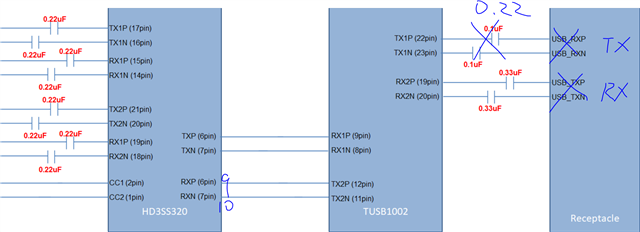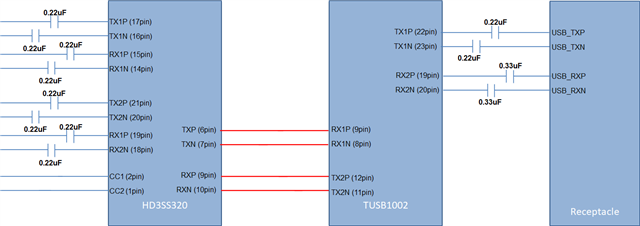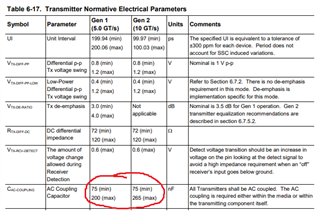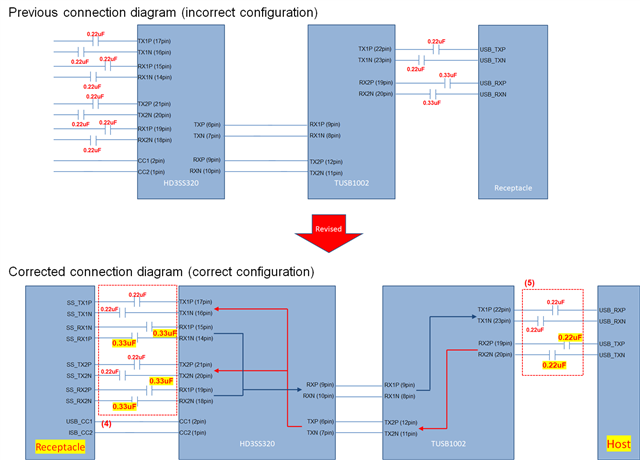Other Parts Discussed in Thread: , HD3SS3220
Hi All,
I would like you to check the circuit diagram for AC coupling of TUSB1002.
Set the AC coupling capacitance in the simple circuit diagram below. Is this OK?
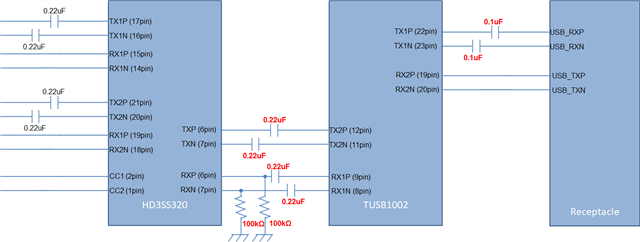
The datasheet has an AC coupling capacitor on the RX line, but the EVM didn't have one on the RX line. which one is correct? Please tell me the recommended capacitor value.
Best Regards,
Ishiwata



